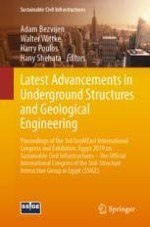2020 | Buch
Latest Advancements in Underground Structures and Geological Engineering
Proceedings of the 3rd GeoMEast International Congress and Exhibition, Egypt 2019 on Sustainable Civil Infrastructures – The Official International Congress of the Soil-Structure Interaction Group in Egypt (SSIGE)
herausgegeben von: Prof. Dr. Adam Bezvijen, Prof. Dr. Dr. Walter Wittke, Harry Poulos, Dr. Hany Shehata
Verlag: Springer International Publishing
Buchreihe : Sustainable Civil Infrastructures
